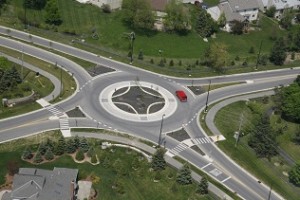Africa Is A Booming Market For Stolen Cars
If luxury cars have become a more common sight on African...
 Peak hours in Nairobi are a nightmare for the ordinary city worker. A drive from the city centre to Thika town could take three hours and a drive down Mombasa road could take longer owing to its traffic uncertainties.
Peak hours in Nairobi are a nightmare for the ordinary city worker. A drive from the city centre to Thika town could take three hours and a drive down Mombasa road could take longer owing to its traffic uncertainties.
The country’s failure to address the traffic mess within the Central Business District (CBD) and its environs since independence is costing the economy Sh30 Billion daily.
According to a report dubbed The Nairobi Metropolitant Region Traffic Decongestion Programme, motorists incur huge fuel costs. They also suffer mental anguish as they waste several hours on the roads.
However, the country now seems to be on the brink of a road traffic revolution.
A drive on the eight-lane Nairobi-Thika highway presents a picture of technology at its apex.
One nods to the reality that it will be one of the most modern super-highways in Africa. Mombasa road commuters expect to make a triumphant entry into the city by means of an exciting fly over and the scenario of drivers taking long hours stuck in jams could be a thing of the past.
This new project is not only along Thika road. The Kenya Urban Roads Authority (Kura) is currently involved in the construction of Northern, Eastern and the Southern by passes. The authority also intends to widen Uhuru Highway and Ngong Road.
Seeing such massive construction going on elicits questions in the minds of many Kenyans.
They are left asking why previous regimes failed to improve the transport system. Or is the Kibaki administration determined to leave a lasting legacy in the sector?
According to the Director General of Kura, Engineer Joseph Nkadayo, these are just examples of nationwide streamlining that Kenyans are set to enjoy when the government completes its plans to build state-of-the-art roads and to bring the present ones at par with the world’s best roads.
The authority has began implementation of the Nairobi Urban Transport Master Plan in an effort to decongest the city.
The Master Plan was financed by the Japanese government and proposes measures on how the transport system in Nairobi and its environs could be enhanced up to 2025.
“We have recruited technocrats in Kura regions to assist in county development. Among the staff recruited are engineers, procurement officers, legal officers and information and communication technologists,” says Engineer Nkadayo.
The regions are meant to enhance efficiency and effectiveness in handling technical and administrative issues.
The Eastern bypass is approximately 32 kilometers and starts from Mombasa road at city Cabanas to Ruiru-Kiambu road near Prison Training School.
The Northern bypass, on the other hand, is approximately 21 kilometers long starting from Ruaka trading centre on Limuru road and joins the Eastern bypass just after Kamiti River.
The Deputy Resident engineer, Victor Okech, told The County Weekly that the roads would have overpasses, underpasses, and modern bridges at various points.
“Five bridges have already been constructed along Kagundo road. There is one at Nairobi River, Gathiani River, Gatharaini River and Kamiti River. Work is in progress on two outstanding bridges on Outering Road and Mombasa road interchange,” says Engineer Okech.
Most Kura projects are grant aid schemes under the Japan International Cooperation Agency (JICA) while 85 per cent of the cost of constructing the Eastern and the Northern bypasses is financed by Exim Bank of China.
It is projected that the two bypasses will be completed in October and at a cost of Sh9 billion.